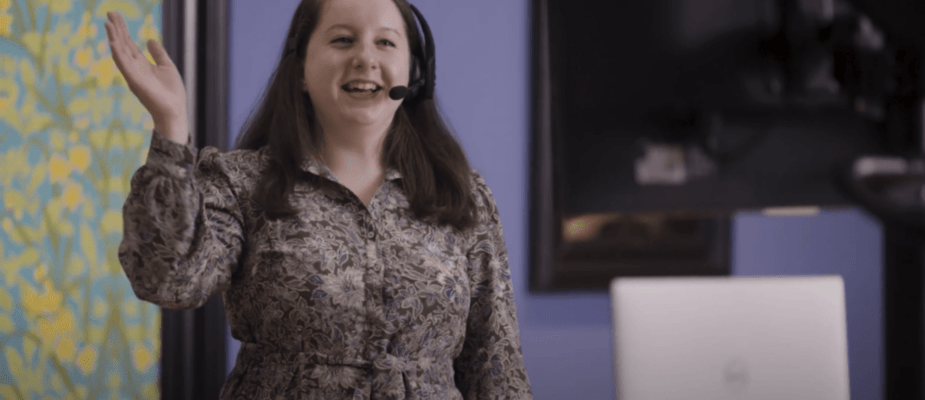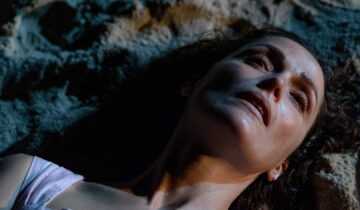Interview by Amber Thompson, Marketing & Communications Coordinator
Tori Waldron, manager of teacher and school programs at OKCMOA, has a passion for bringing art to students across the state. If you’ve ever wondered what a virtual field trip is, read on to learn more!
What should people know about virtual field trips that they might not know?
A lot of the time when I hear from people, they think virtual field trips are not interactive or live from the gallery. I actually try to make them as interactive as possible. I have a cart that I move through the galleries with, and we have anywhere from 30 minutes to an hour of activities. It’s more than just looking at art.
And while we love students in the galleries, virtual field trips allow for the curriculum to be customized based on the goals of the teacher, it’s led by a Museum educator, and the camera on my cart shows details you’re unable to see with the naked eye.
How is it interactive?
With Museum Medley, one of the virtual field trips courses, for example, we’re talking about the components of art, art mediums, even social studies. I’ll have them look for elements of art in their classroom and see who can find the most unique element of art, the one they think no one else will find. While we can’t always get to every student, I’ll use the turn-pair-share technique to get them talking with each other.
No matter the age, I try to get students up and moving with an activity like that or even a quick sketch.
What makes OKCMOA and virtual field trips a good match?
I think what’s great about our museum, especially when you talk about virtual field trips, is that we have a lot of different types of art: different eras, different mediums. It’s great to be able to show students something by Dale Chihuly, a 500-year-old painting from Italy, and a Yoshida Hiroshi work in a traditional Japanese printmaking style.
What are your goals for virtual field trips in the coming year?
To spread awareness that we can do multiple field trips, whether that’s virtual followed by in-person or vice versa, that virtual field trips are designed to take place over a single class period, and that we can cover different topics like social studies or English language arts.
What about virtual field trips is so special in your opinion?
I really like talking with people about art. I love the fact that I can reach more people in the comfort of their classroom.
What is the difference between doing a virtual field trip based around our permanent collection versus a traveling exhibition?
Both are great. With special exhibitions the exhibition’s narrative does tend to provide a framework for what we cover, but with our permanent collection, because the works are here and we have all this information about them, there are all these other directions we can go. I’ll revisit virtual field trips and think about other ways to present them. It keeps me on my feet and the content fresh.
What do you hope students take away from a virtual field trip?
Number one, I hope they had a fun time, and number two, I hope they have a new appreciation or enthusiasm for the Museum. I want them to feel welcome here. We want them to be part of our community.
It’s incredibly rewarding and a great privilege of mine for people to feel like they’re welcome and can experience art, whether it’s a virtual field trip or in –person, I weigh those equally in my brain.








